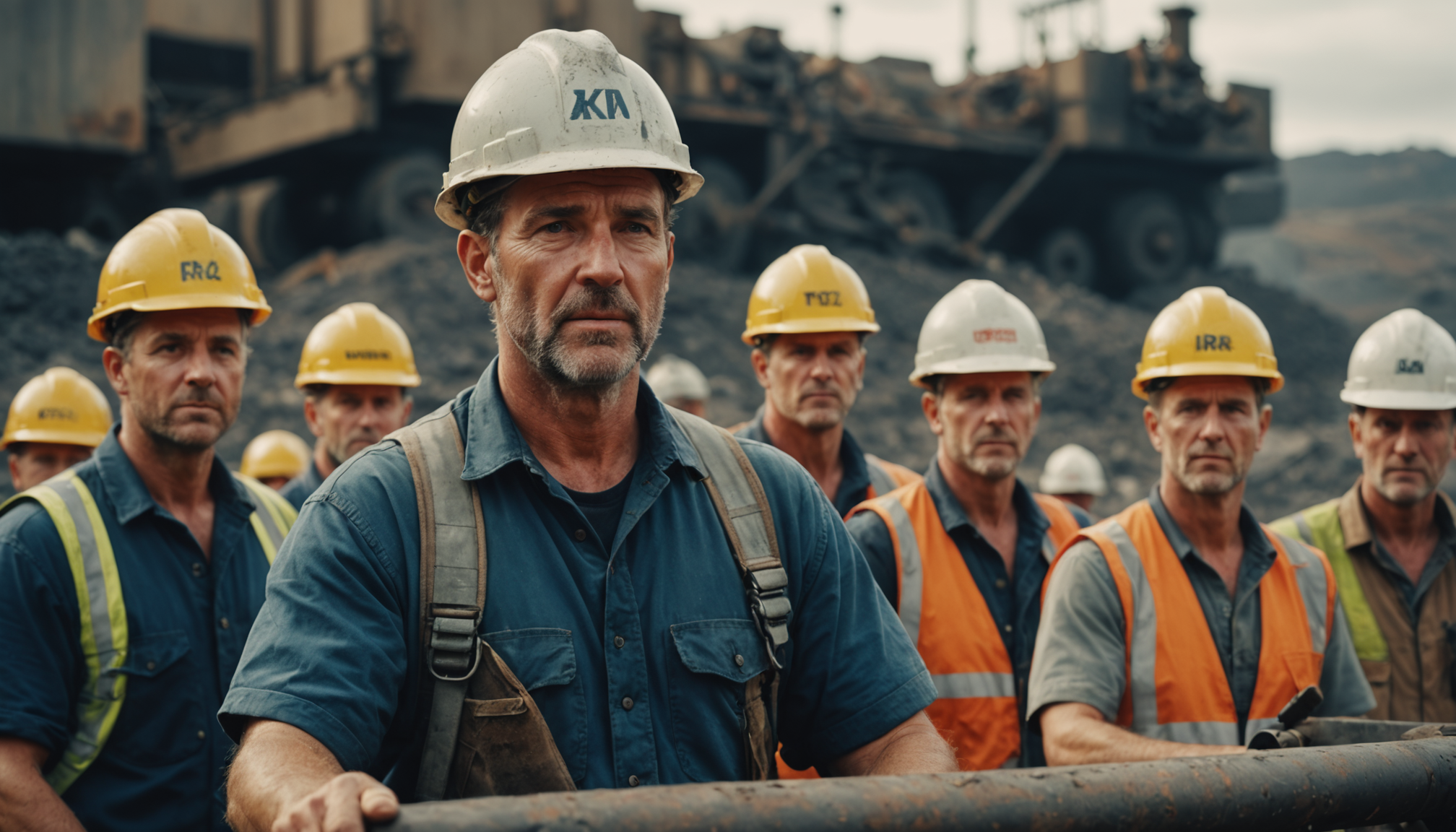
Australia’s Industrial Sector Faces Energy Crisis Amidst SDG Commitments
Introduction
Australia’s major industrial companies are urgently seeking government support as escalating energy prices threaten their viability. This situation presents a critical challenge for Prime Minister Anthony Albanese’s Labor government, particularly in balancing economic growth with sustainable development goals (SDGs).
Energy Costs and Industrial Viability
Several Australian metals smelters have reached a crisis due to soaring power bills and fluctuating commodity prices, putting thousands of jobs at risk. Key developments include:
- Glencore’s Mount Isa Copper Smelter: The UK-listed miner reported that unprecedented market conditions, high energy, gas, and labor costs, along with a shortage of copper concentrates, have rendered the smelter unviable.
- Government Engagement: Industry Minister Tim Ayres visited Mount Isa to discuss potential state and federal aid, emphasizing the smelter’s importance to Australia’s sovereign capability and downstream industries.
- Rio Tinto’s Aluminium Smelters: The Tomago smelter in New South Wales, consuming about 10% of the state’s electricity, faces an uncertain future due to rising power costs and slow energy transition. The New South Wales Labor government is considering intervention, potentially involving billions in public funds.
- Other Facilities at Risk: Rio Tinto’s hydro-powered smelter in Tasmania and a manganese facility owned by GFG Alliance are also seeking support. Additionally, Trafigura has suggested nationalizing struggling smelters to compete with China.
Alignment with Sustainable Development Goals
The government’s response to this industrial crisis intersects with several SDGs, including:
- SDG 7 (Affordable and Clean Energy): The transition from coal-fired power to renewable energy is central to Labor’s agenda, yet high energy costs challenge industrial competitiveness.
- SDG 8 (Decent Work and Economic Growth): Protecting thousands of jobs in the manufacturing sector is critical, but must be balanced with productivity and economic sustainability.
- SDG 9 (Industry, Innovation, and Infrastructure): Supporting the processing industry aligns with ambitions to establish Australia as a critical minerals superpower and enhance sovereign capabilities.
- SDG 12 (Responsible Consumption and Production): The energy transition and industrial support must consider environmental impacts and sustainable resource use.
Government Policy and Industrial Relations
Prime Minister Albanese’s government has prioritized manufacturing revival and the energy transition, but faces complex decisions:
- Balancing support for energy-intensive industries with commitments to renewable energy.
- Addressing foreign acquisitions in strategic sectors such as energy and defense.
- Managing industrial relations tensions following legislative changes affecting mining and labor sectors.
Economic and Environmental Considerations
Experts highlight the tension between preserving jobs and improving productivity:
- Economist Saul Eslake notes the government’s inclination towards “manufacturing fetishism” and warns that bailing out unviable smelters may hinder productivity improvements.
- Environmental and indigenous groups have opposed extensions of fossil fuel projects, such as Woodside Energy’s gas project, reflecting SDG 13 (Climate Action) concerns.
Future Directions and Recommendations
To align industrial policy with sustainable development, the following actions are recommended:
- Facilitate Private Sector Investment: Encourage private sector-led growth while ensuring public sector support facilitates sustainable industrial development (SDG 17 – Partnerships for the Goals).
- Streamline Regulation: Reduce “red and green tape” to improve investor confidence in housing and green energy sectors, supporting SDG 11 (Sustainable Cities and Communities) and SDG 7.
- Implement National R&D Strategy: Adopt tax incentives and innovation policies to boost investment and competitiveness, in line with SDG 9.
- Promote Energy Transition: Provide production credits and incentives for smelters to switch to renewable energy sources, advancing SDG 7 and SDG 13.
- Enhance Stakeholder Consensus: Foster collaboration among business leaders, unions, and policymakers to drive productivity and sustainable economic reforms.
Conclusion
Australia’s industrial sector is at a crossroads, with energy costs threatening its sustainability amid the government’s commitment to the Sustainable Development Goals. The Albanese administration’s ability to balance economic growth, job preservation, and environmental responsibility will be critical in shaping the nation’s industrial future.
1. Which SDGs are addressed or connected to the issues highlighted in the article?
- SDG 7: Affordable and Clean Energy
- The article discusses high energy prices impacting industrial operations and the transition from coal-fired power to renewable energy sources.
- SDG 8: Decent Work and Economic Growth
- Concerns over job losses in metals smelters and the broader manufacturing sector are highlighted.
- Focus on boosting productivity, investment, and economic reforms.
- SDG 9: Industry, Innovation, and Infrastructure
- Emphasis on manufacturing revival, industrial policy, and critical minerals processing industry.
- Calls for national research and development strategies to boost investment.
- SDG 12: Responsible Consumption and Production
- Discussions about energy transition and reducing reliance on coal-fired power.
- SDG 13: Climate Action
- Energy transition to renewable sources and environmental concerns related to gas projects.
- SDG 10: Reduced Inequalities
- Issues related to job security and economic impacts on local communities such as Mount Isa and Hunter Valley.
2. What specific targets under those SDGs can be identified based on the article’s content?
- SDG 7: Affordable and Clean Energy
- Target 7.2: Increase substantially the share of renewable energy in the global energy mix.
- Target 7.3: Double the global rate of improvement in energy efficiency.
- SDG 8: Decent Work and Economic Growth
- Target 8.2: Achieve higher levels of economic productivity through diversification, technological upgrading, and innovation.
- Target 8.5: Achieve full and productive employment and decent work for all women and men.
- SDG 9: Industry, Innovation, and Infrastructure
- Target 9.2: Promote inclusive and sustainable industrialization and, by 2030, raise significantly industry’s share of employment and gross domestic product.
- Target 9.5: Enhance scientific research, upgrade technological capabilities and encourage innovation.
- SDG 12: Responsible Consumption and Production
- Target 12.2: Achieve the sustainable management and efficient use of natural resources.
- SDG 13: Climate Action
- Target 13.2: Integrate climate change measures into national policies, strategies, and planning.
- SDG 10: Reduced Inequalities
- Target 10.2: Empower and promote the social, economic and political inclusion of all.
3. Are there any indicators mentioned or implied in the article that can be used to measure progress towards the identified targets?
- Energy Prices and Consumption
- Electricity usage by smelters (e.g., Tomago aluminium smelter uses about 10% of NSW electricity) implies measurement of energy consumption and cost trends.
- Indicators related to the share of renewable energy in total energy consumption.
- Employment and Job Security
- Number of jobs at risk or preserved in metals smelting and manufacturing sectors.
- Employment rates in industrial sectors affected by energy costs and government interventions.
- Industrial Productivity and Investment
- Measures of productivity improvements in manufacturing and mining sectors.
- Levels of private sector investment and research & development expenditure.
- Environmental and Climate Indicators
- Progress in transitioning from coal-fired power to renewable energy sources.
- Regulatory approvals and impacts of energy projects (e.g., gas project extensions).
- Government Policy and Support Measures
- Government aid or bailout amounts provided to struggling industries.
- Implementation of production credits for renewable energy transition.
4. Table: SDGs, Targets and Indicators
| SDGs | Targets | Indicators |
|---|---|---|
| SDG 7: Affordable and Clean Energy |
|
|
| SDG 8: Decent Work and Economic Growth |
|
|
| SDG 9: Industry, Innovation, and Infrastructure |
|
|
| SDG 12: Responsible Consumption and Production |
|
|
| SDG 13: Climate Action |
|
|
| SDG 10: Reduced Inequalities |
|
|
Source: ft.com







